Original was at
http://home.istar.ca/~films/archers.html
Then was at
http://www.cinematheque.bc.ca/previous/archers.html
but without images.
Now, nowhere except here.

Pacific Cinémathéque, in conjunction with the British Film
Institute and the Champagne Piper-Heidsieck Classic Film
Collection, presents
THE AMAZING ARCHERS:
The Films of Michael Powell & Emeric Pressburger
All New, Fully Restored, Full Length 35mm Prints from the
British
Film Institute*
 In the history of motion pictures, Michael Powell and Emeric
Pressburger occupy a very special place. They explored uncharted
territories, established new boundaries and redefined the art of
film-making. . . [F]or me, the Powell/Pressburger films perform
like symphonies. I can frequently play them and yet discover new
things, enjoy their rich texture, their subtle nuances, their
hysteria and grace. As a viewer, they make me feel I'm
continuously rediscovering the cinema." -- Martin Scorsese
In the history of motion pictures, Michael Powell and Emeric
Pressburger occupy a very special place. They explored uncharted
territories, established new boundaries and redefined the art of
film-making. . . [F]or me, the Powell/Pressburger films perform
like symphonies. I can frequently play them and yet discover new
things, enjoy their rich texture, their subtle nuances, their
hysteria and grace. As a viewer, they make me feel I'm
continuously rediscovering the cinema." -- Martin Scorsese
"One of the most remarkable, if relatively unheralded,
partnerships in contemporary cinema." -- Stephen Hanson
"Powell . . . is the most audaciously extrovert of British
directors, scornful of the constrictions of good taste and happy
to eschew realism in the name of colour and spectacle.
Extraordinary fates await his often larger-than-life characters
and all his major films contain passages which shift from reality
to myth, from the rhythms of ordinary life to a pure symphony of
colour and sound which bears out his often stated admiration for
Walt Disney." --Roy Armes
"There is not a British director, working in Britain, with as
many worthwhile films to his credit as Michael Powell . . .
Against persistent British attempts to dignify realism, Powell
must have seemed gaudy, distasteful and effete. All three
ingredients contribute to his vision, but so do an imaginative
evocation of the erotic and the supernatural, a pioneering
enthusiasm for visual autonomy always likely to break out in
passages of stunning delight, . . . a wicked sense of humour and
private jokes, and, most distinctive . . . an unsettling mixture
of emotional reticence and splurging fantasy." -- David Thomson
"May rival Hitchcock as Britain's most prominent film-maker." --
Associated Press
"Michael Powell is the most extreme and the most elusive director
in the English cinema. He may also be the best, if you are
prepared for the best to be so unsettling." -- David Thomson
"Has Britain ever produced a more personal, and versatile,
virtuoso of a cineaste than Michael Powell?" -- Gerald Peary
At a time when sober, black-and-white, semi-documentary kitchen
sink realism was establishing itself as the dominant aesthetic of
the British cinema, the collaborative team of director Michael
Powell and Hungarian-born screenwriter Emeric Pressburger --
working collectively under the name "The Archers" -- fashioned an
amazing body of work completely at odds with prevailing British
fashion: highly stylized, colourful, expressionist, fantastical,
flamboyant, florid, gothic, romantic, mystical, ironic,
eccentric, exotic, extravagant, excessive. Many serious critics
of the day, and of subsequent decades, disdained their work --
The Archers' films were always more popular with British
audiences than with British critics -- and as recently as fifteen
years ago one admirer of proto-postmodernists Powell and
Pressburger could profess to be mystified by their lack of even
cult status: "On practically all counts, Michael Powell ought to
be a cult figure, the object of passionate devotion. . . but he
has never quite made it. . . [It] may be that he is too eccentric
to be accepted wholeheartedly as a British director by the
British, and too significantly British to be accepted by the rest
of the world as anything else" (John Russell Taylor).
Since those words were written, the tide has turned
significantly: "Today, no one has any doubts that Powell and
Pressburger are among the greatest moviemaking partnerships, or
that Powell was any less than a rare uncompromising genius"
(David Thomson). Indeed, today Powell is often cited as the
British cinema's greatest director -- arguably greater even than
Hitchcock, who, of course made most of his masterworks in
Hollywood -- and The Archers are cited as important influences on
the stylish likes of Ken Russell, Nicolas Roeg, Derek Jarman, and
other aesthetic mavericks who similarly eschewed the social
realism of the mainstream British cinema. (The late Jarman once
declared Powell as "the only British feature director whose work
is in the first rank.") Perhaps Powell's most illustrious and
most important contemporary proponent has been Martin Scorsese,
who has consistently and vocally championed Powell as one of the
cinema's all-time greatest artists. (Scorsese's Oscar-winning
editor, Thelma Schoonmaker, is Powell's widow, and has also been
instrumental in the critical rehabilitation of The Archers'
works.)
This retrospective showcases The Archers' amazing oeuvre, from
the expressionist-influenced war and espionage films with which
Powell and Pressburger began their collaboration, to the florid
colour fantasies of the late 40s and 50s which constitute their
greatest achievements, and which are amongst the most visually
extravagant films ever made -- and which just beg to be seen as
they will be presented here: in sparkling, new, restored,
unexpurgated 35mm prints. (Many of The Archers' films were
available for years only in severely cut, abbreviated versions).
Made possible through the efforts of the Champagne Piper-
Heidsieck Classic Film Collection, a joint venture of the British
Film Institute and the renowned champagne house aimed at
restoring and disseminating new 35mm prints of essential works of
world cinema, this is truly a rare, not-to-be-missed opportunity
to see The Archers' ravishing, one-of-a-kind cinema in all its
vintage big-screen glory. It is also, we believe, far and away
the event of the season on the international cinematheque
circuit. Pacific Cin math que is pleased and proud to be able to
present it to Vancouver audiences.
Acknowledgements: British Film Institute / Champagne Piper-
Heidsieck Classic Film Collection
* Please note: Ill Met By Moonlight and Peeping Tom, which
we
have included in this series, do not form part of the
BFI/Champagne Piper-Heidsieck Powell and Pressburger restoration
project, and will screen here in the best 16mm prints available.
All other Powell and Pressburger works will screen, as
advertised, in new 35mm prints.
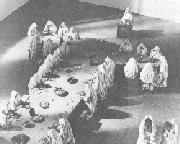 Double Bill FRIDAY & SATURDAY NOVEMBER 24 & 25
Double Bill FRIDAY & SATURDAY NOVEMBER 24 & 25
* 7:30 pm
BLACK NARCISSUS
Great Britain 1947. Director: Michael Powell, Emeric Pressburger
Cast: Deborah Kerr, Sabu, David Farrar, Kathleen Byron
A sumptuous stunner of studio-set style and seething, repressed
sexuality, the erotic, exotic Black Narcissus is one of the great
triumphs of the British cinema, and one of the great masterpieces
in the Powell and Pressburger canon. Five Anglican nuns attempt
to establish a mission in a one-time bordello in the remote
Himalayas, but find their faith sorely tested by climate, culture
clash, and carnal passion. The superb cast is headed by Deborah
Kerr as Sister Clodagh, the virtuous Mother Superior; David
Farrar as Mr. Dean, a cynical, sensual British agent; Sabu as
Dilip Rai, the local Indian potentate, who wears British-bought
"Black Narcissus" perfume; and Kathleen Byron as half-mad Sister
Ruth, unhinged by her desire for Mr. Dean. The film's flesh-
versus-spirit battle unfolds in a deliriously designed, studio-
set India that recalls the lavish stylizations of Josef von
Sternberg's 1930s films with Marlene Dietrich; Black Narcissus
won much-deserved 1947 Oscars for its amazing colour
cinematography (by Jack Cardiff) and breathtaking set decoration
(by Alfred Junge), and was recently hailed as "one of the last
masterpieces of studio-based art direction" (Elliot Stein,
Village Voice). "One of the most visually beautiful films ever
made. . . from one of the great collaborative teams in the
history of cinema" (James Monaco). "Picturesque, fevered and
half-crazy. . . as if the film had been made by a hysterically
abstinent nun" (David Thomson). "One of Britain's greatest
cinematic masterpieces, a marvellous evocation of hysteria and
repression, and. . . one of the few genuinely erotic films ever
to emerge from these sexually staid isles" (Geoff Andrew, Time
Out). Colour, 35mm. 100 mins.
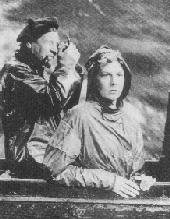 * 9:30 pm
* 9:30 pm
I KNOW WHERE I'M GOING
Great Britain 1945. Director: Michael Powell, Emeric Pressburger
Cast: Wendy Hiller, Roger Livesey, Pamela Brown, George Carney
"A charmer of a movie" (Pauline Kael), Powell and Pressburger's
often-overlooked I Know Where I'm Going is a stormy, magical, Art
Deco romance set in the Western Isles of Scotland. Wendy Hiller
stars as a headstrong young woman travelling to the Hebrides to
marry a wealthy older man. Waylaid by weather along the way, she
finds herself falling under the sway of Scottish culture -- and
falling for a dashing young Scottish laird (played by P&P regular
Roger Livesey). Chock-full of Celtic symbolism, mysticism, and
folklore, and of wonderfully windblown Highlands landscapes,
"this lyrical love story scales heights of emotional
sophistication rare in British cinema" (Ian Christie).
"Alongside A Canterbury Tale, Powell's most eloquent tribute to
the mysteries of the British landscape. . . Lyrically shot in
monochrome by Erwin Hillier, it's all quite beautiful, combining
romance, comedy, suspense and a sense of the supernatural to
winning effect" (Geoff Andrew). "Witty and moving, one of the
finest of all screen romances" (Elliot Stein, Village Voice). "I
reached the point of thinking there were no more masterpieces to
discover, until I saw I Know Where I'm Going" (Martin Scorsese).
B&W, 35mm. 92 mins.
 Double
Bill FRIDAY & SATURDAY DECEMBER 1 & 2
Double
Bill FRIDAY & SATURDAY DECEMBER 1 & 2
* 7:15 pm
THE RED SHOES
Great Britain 1948. Director: Michael Powell, Emeric Pressburger
Cast: Anton Walbrook, Moira Shearer, Marius Goring, Robert
Helpmann
"One of the most beloved films of all time" (Ian
Christie), and the ballet film par excellence, Powell and
Pressburger's ravishing, rapturous The Red Shoes -- presented
here in a gorgeous new 35mm print -- was recently selected by
Martin Scorsese as one of the five greatest films ever made (with
8 1/2, Citizen Kane, The Leopard, and The Searchers). Moira
Shearer, in a remarkable screen debut, is Victoria Page, an up-
and-coming dancer newly taken on by a successful ballet company.
Anton Walbrook is Lermontov, the company's demanding,
manipulative impresario (modelled on Serge Diaghilev), whose
ruthless your-art-is-your-life approach to dance imperils
Victoria's physical and emotional health. Marius Goring is
Julian, the young composer with whom Victoria falls in love. The
film is loosely based on the fairy tale of the same name by Hans
Christian Andersen; a magical 14-minute ballet sequence directly
based on the Andersen tale forms its much-celebrated centre
piece. Jack Cardiff (Black Narcissus) provided the dazzling
Technicolor cinematography. The Red Shoes won 1948 Oscars for
Best Art Direction and Best Score, was a nominee in the Best
Picture and Best Story categories, and is said to have "launched
a thousand hopeful dance careers" (Christie). "It affects some
people passionately, and it's undeniably some kind of classic"
(Pauline Kael). "In texture, it's like nothing the British cinema
had ever seen: a rhapsody of colour expressionism, reaching
delirious heights in the ballet scenes" (Tony Rayns). Colour,
35mm. 133 mins.
* 9:45 pm
THE SPY IN BLACK
Great Britain 1939. Director: Michael Powell
Cast: Conrad Veidt, Valerie Hobson, Sebastian Shaw, Marius Goring
The Spy in Black marked the first collaboration between director
Powell and screenwriter Pressburger, who were brought together by
mogul Alexander Korda to develop a suitable vehicle for well-
known German actor Conrad Veidt. The result was this wonderfully
atmospheric Hitchcockian spy thriller, "conceived as a virtual
homage to German expressionist cinema" (Roy Armes), with Veidt as
a shadowy German U-Boat captain who slinks off his submarine and
enters Scotland on an anti-British espionage mission during World
War I. Valerie Hobson co-stars as the beautiful schoolmistress
who is his on-shore contact. The film was released a mere three
weeks before the outbreak of World War II, and proved a huge hit
in Britain, despite its sympathetic treatment of the German
protagonist. "It seemed unlikely that, as war drew near, Powell
and Pressburger would choose to explore the German personality,
but this was absolutely characteristic of the perverse
originality they cultivated" (David Thomson). "Extraordinarily
atmospheric... Daringly, the audience is asked to sympathise
with the 'enemy'... Intrigue, uncertainty and confused loyalties build
to a
bitter, ironic climax, and along the way Powell effortlessly
produces more memorable shots and scenes than can be found in a
dozen contemporary films" (Chris Petit, Time Out). B&W,
35mm.
82
mins.
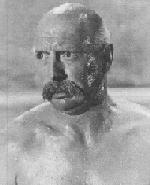 SUNDAY & MONDAY DECEMBER 3 & 4
SUNDAY & MONDAY DECEMBER 3 & 4
* 7:30 pm only
THE LIFE AND DEATH OF COLONEL BLIMP
Great Britain 1943. Director: Michael Powell, Emeric Pressburger
Cast: Roger Livesey, Deborah Kerr, Anton Walbrook, Roland Culver
"Very possibly the finest film ever made in Britain" (David Kehr,
Chicago Reader), Powell and Pressburger's The Life and Death of
Colonel Blimp -- the first P&P work produced under "The Archers"
banner -- is a masterful, mock-epic tale, told in flashback and
bold Technicolor, charting the friendship between a British
officer (Roger Livesey) and a Prussian officer (Anton Walbrook)
over the course of four war-torn decades. Deborah Kerr co-stars
in three different roles, including that of the woman who comes
between them. The title comes from David Low's popular cartoon
character of the 1930s and 40s, which lampooned the pomposity and
conservatism of the upper-crust British military establishment;
the film's satirical take incurred the wartime wrath of no less
than Churchill, who sought to have the work suppressed.
Available for years in severely truncated, inadequate versions
only, The Life and Death of Colonel Blimp was finally restored to
its full 163-minute-long glory in the mid-1980s, and re-released
to great acclaim. "A warm and wise work which displays
extraordinary generosity of spirit. . . Roger Livesey gives one
of the great performances of the British cinema" (James Monaco).
"Outrageously original. . . Despite Churchill's opposition, it
was seen and loved by a people who always respond well to a
gracious celebration of their foibles" (David Thomson). "Blimp
probes the British character like no other movie -- which may be
why Churchill tried to have it banned, and why the British film
critics voted it a special award when it was triumphantly re-
released in 1985" (Ian Christie). "In the history of British
cinema there is nothing to touch it" (Chris Peachment, Time Out).
Colour, 35mm. 163 mins.
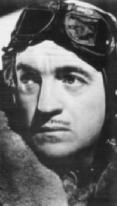 Double
Bill FRIDAY & SATURDAY DECEMBER 8 & 9
Double
Bill FRIDAY & SATURDAY DECEMBER 8 & 9
* 7:30 pm
A MATTER OF LIFE AND DEATH
(aka STAIRWAY TO HEAVEN)
Great Britain 1946. Director: Michael Powell, Emeric Pressburger
Cast: David Niven, Kim Hunter, Roger Livesey, Raymond Massey
"A stunning, subversive masterpiece" (Ian Christie), this
legendary (and more than a little bizarre) Powell and Pressburger
tour-de-force stars David Niven as destined-to-die British
aviator who, by angelic mistake, escapes certain death, and lives
to falls in love with a young American woman (played by Kim
Hunter). When the mistake is discovered Upstairs, a celestial
tribunal is convened to decide the hero's fate: will he be
allowed to remain on earth, or must he make haste to heaven? The
film was commissioned by the British Ministry of Information, to
enhance British-American relations, and was screened at the
first-ever Royal Film Performance. The jaw-dropping production
design, by Alfred Junge, includes a mammoth stairway-to-the-
stars, peopled by history's dead. In what was perhaps a playful
jab at prevailing cinematic norms of realism, and at socialist
ideas of utopia, the film reverses Wizard of Oz colour-coding by
presenting life-on-earth reality in sumptuous Technicolor, while
the afterlife in heaven is rendered in blander black-and-white.
"The film is without rival in British cinema for its evocation of
the eerie calm of Surrealism" (David Thomson). "A fantastic
accomplishment which shines with surrealistic cinematic bravura.
. . Powell and Pressburger achieve what few have -- walking the
tightrope between fantasy and reality with deftness and
impeccable taste" (James Monaco). "An outrageous fantasy full
of wit, beautiful sets and Technicolor, and perfectly judged
performances. . . [T]he whole thing works like a dream, with
many hilarious swipes at national stereotypes, and a love story
that is as moving as it is absurd. Masterly" (Geoff Andrew).
Colour and B&W, 35mm. 104 mins.
 * 9:30 pm
* 9:30 pm
A CANTERBURY TALE
Great Britain 1944. Directors: Michael Powell, Emeric Pressburger
Cast: Eric Portman, Sheila Sim, Dennis Price
"From any point of view, the kinkiest film of the war" (Basil
Wright), the wonderfully curious, half-cocked A Canterbury Tale
has recently been "rediscovered" and reevaluated as one of Powell
and Pressburger's finest achievements. The film is set in a
sleepy Kent village, where three characters (a young woman, a
British sergeant, and an American G.I.) set out to expose the
mysterious, must-be-mad "glueman" who is terrorizing local women
-- by pouring glue into their hair! This quirky premise sets the
stage for a mystical meditation on British tradition, lyrically
shot in beautiful black-and-white by Erwin Hillier, with definite
hints of the sadism and perversity which form the darker side of
the Powell and Pressburger genius. "Long considered a failure of
the Archers, this was the first to be restored to its original
structure and length; and it has since become one of their best-
loved excursions into a very English form of mysticism" (Ian
Christie). "Extraordinary. . . Though infuriatingly difficult
to categorize, the film is bold, inventive, stimulating and
extremely entertaining" (Time Out). "One of the weirdest, but
almost most atmospheric and beautiful of the Archers' works"
(Film Forum, New York). B&W, 35mm. 124 mins.
Double Bill SUNDAY & MONDAY DECEMBER 10 & 11
Angela Pressburger, daughter of Emeric Pressburger, will be in attendance
to introduce Gone to Earth & 49th Parallel
* 7:30 pm
GONE TO EARTH
Great Britain 1950. Director: Michael Powell, Emeric Pressburger
Cast: Jennifer Jones, David Farrar, Cyril Cusack, Sybil Thorndyke
Roundly dismissed by critics in its day, more recently reclaimed
and rehabilitated by Powell and Pressburger enthusiasts and
cultists, this tour-de-force of Technicolor design was adapted
from a 1917 bodice-ripper by Mary Webb, and features Hollywood
star Jennifer Jones as a young country girl torn between the
sacred love of a mild preacher (Cyril Cusack) and the profane
love of a lusty squire (David Farrar). Producer David O.
Selznick, who instigated the project as a vehicle for wife Jones,
disliked the results, and issued a severely cut, inferior
American version, with additional footage by Rouben Mamoulian,
under the title The Wild Heart. This restored version "allows
Gone to Earth to claim its rightful place as the last of Powell
and Pressburger's great Technicolor epics of the Forties" (Ian
Christie). "A visually spellbinding romance. Christopher
Challis' photography evokes Shropshire and the Welsh borders so
that you can smell the earth. . . [T]he haunting, dreamlike
consistency recalls that other fairy story of innocence and
menace, Night of the Hunter" (Time Out). Recently selected by
Sight and Sound critic Pam Cook as one of the ten best films of
all time. Colour, 35mm. 110 mins.
 * 9:35 pm
* 9:35 pm
49TH PARALLEL
Great Britain 1941. Director: Michael Powell
Cast: Eric Portman, Laurence Olivier, Leslie Howard, Richard
George Powell and Pressburger go to Canada in this stirring,
shot-on-location wartime drama, commissioned by the British
Ministry of Information as part of the effort to bring the U.S.
into the war. Six members of a German U-boat crew, stranded in
the Great White North after their submarine is sunk off the
Canadian coast, attempt to escape cross-country to the still-
neutral U.S. Their encounters with a variety of Canadian "types"
along the way -- including a French-Canadian fur trapper (a hammy
Laurence Olivier), a Manitoba Hutterite leader (Anton Walbrook),
an AWOL Canadian soldier (Raymond Massey), and various Indian and
Inuit tribes -- provide the film with a running (and surprisingly
sophisticated) debate on the merits of democracy versus
dictatorship. Pressburger's first-rate script won an Academy
Award for Best Original Story; the film (released in the U.S. as
The Invaders) was also nominated in the Best Picture and Best
Original Screenplay categories. 49th Parallel drew some flak at
home, however, for its somewhat equivocal propaganda content (the
semi-heroic portrayal of its German protagonists; Leslie Howard's
effete English character). "The anti-Fascist message here is extremely
eloquent, the Oscar-
winning script witty and intelligent, and the photography
handsome and atypical for a war film. Powell beautifully ties it
all together in a directorial style that is part war adventure,
part Robert Flaherty-influenced documentary" (James Monaco). "A
bold and simple cautionary tale. . . One of the most intelligent
(and eccentric) of all wartime propaganda features" (Ian
Christie). B&W, 35mm. 123 mins.
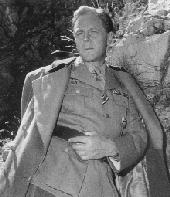 * 9:15 pm
* 9:15 pm
ILL MET BY MOONLIGHT
Great Britain 1957. Director: Michael Powell, Emeric Pressburger
Cast: Dirk Bogarde, Marius Goring, David Oxley, Cyril Cusack
The last regular Powell and Pressburger collaboration (the two
did reunite briefly in 1972 to work on a children's film), the
underrated Ill Met by Moonlight is set in German-occupied Crete
in 1943, and based on the improbable but true story of two
British officers who, with the help of Cretan partisans,
disguised themselves as Nazis, kidnapped a German general, and
attempted to spirit him across country by night to a waiting
British ship. The fine cast is headed by Dirk Bogarde as
flamboyant Major Patrick Leigh-Fermor; David Oxley as chivalrous
Captain Billy Stanley Moss, his cohort; and frequent P & P player
Marius Goring as their German victim. The film was based on a
memoir of the same name by the real Captain Moss; the real Major
Leigh-Fermor ended up as Hollywood screenwriter of John Huston's
lame 1958 Africa epic The Roots of Heaven. Ill Met by Moonlight
features suspenseful pacing, a wonderful sense of landscape,
loads of gloomy atmosphere, and a striking score -- one of his
first for the cinema -- by well-known Greek composer Mikis
Theodorakis (Zorba the Greek, Z, Serpico). "It would be foolish
to suggest that the film. . . is anywhere near the level of the
team's masterworks. Even so, it's more interesting than legend
suggests. . . Taking its title from a play concerned with dreams
and disguises, magic and power, Ill Met by Moonlight is all about
questions of identity" (Peter Richards, Film Comment). B&W,
16mm
Double Bill FRIDAY & SATURDAY DECEMBER
15 & 16
* 7:30 pm
OH ROSALINDA!!
Great Britain 1955. Director: Michael Powell, Emeric Pressburger
Cast: Michael Redgrave, Anthony Quayle, Anton Walbrook, Ludmilla
Tcherina
Not for nothing are there two exclamation marks in the title of
this giddy, gag-filled, over-the-top musical fantasy, which
updates Johann Strauss's Die Fledermaus to post-World War II
Vienna, and has its principal characters representing the four
occupying powers. Michael Redgrave, Ludmilla Tcherina and the
rest of the superlative cast sing and dance up a storm (their
singing voices dubbed by actual opera stars), while the exuberant
action unfolds across a candy-coloured Cinemascope fantasyland of
wild imagination and high artifice. "There probably has never
been a wilder opera film" (Cinematheque Ontario). "A little like
Harry Lime [The Third Man] on pink ice. . . this is so tongue-in-
cheek, such a wry parody of the conventions of operetta, the
whole thing seems to be taking place on top of a wedding cake"
(David Thomson). "The blatant artifice, sugar-candy sets, and
preposterous plot, once deplored by the critical establishment,
are now cherished by connoisseurs" (Time Out). "Oh Rosalinda!!
may be ripe for discovery as a pre-post-modernist musical.
Ebulliently designed by Hein Heckroth and photographed in the
still new Cinemascope process by Christopher Challis, Vienna is a
chocolate box confection superimposed on the drab Europe of
rationing and reconstruction. . . This gorgeous new print was
struck from the original negative" (Ian Christie). Colour, 35mm.
101 mins.
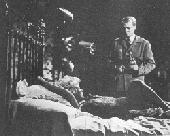 * 9:30 pm
* 9:30 pm
PEEPING TOM
Great Britain 1960. Director: Michael Powell
Cast: Karl Boehm, Anna Massey, Moira Shearer
Now regarded by many as Michael Powell's masterpiece -- and
without doubt one of the cinema's great subversive works --
Peeping Tom (made sans Pressburger) was vilified by outraged
British critics at the time of its release, and virtually ended
the director's career. "The only really satisfactory way to
dispose of Peeping Tom," wrote one reviewer, "would be to shovel
it up and flush it swiftly down the nearest sewer." Karl Boehm
stars as creepy Mark Lewis, a young movie studio focus puller who
spends his spare time making snuff films (!) -- murdering his
victims with the sharpened end of a tripod and filming their
death throes. Powell employs an elaborate structure of films-
within-films, and countless cross-references to the nature and
practice of cinema, to underscore the film's self-conscious
intentions, and has a cameo, in one film-within-the-film, as
Mark's deranged father, a scientist who recorded on film the
sadistic experiments he conducted on his young son. This is
profoundly unsettling stuff, to be sure, but it is also now
widely esteemed as a brilliant exploration of the voyeurism that
fuels our pleasure in cinema, and the troubling way that
voyeurism implicates us as spectators; in this sense, Peeping Tom
is a soul -- or blood -- brother of Hitchcock's Psycho, a film
that similarly offended the British critical establishment in
1960. "One of the most disturbing films ever made" (James
Monaco). "Peeping Tom and 8 1/2 are the two great films that
deal with the philosophy and danger of filmmaking" (Martin
Scorsese). Colour, 16mm. 109 mins.
 Double Bill SUNDAY & MONDAY DECEMBER 17 & 18
Double Bill SUNDAY & MONDAY DECEMBER 17 & 18
* 7:30 pm
THE SMALL BACK ROOM
Great Britain 1948. Director: Michael Powell, Emeric Pressburger
Cast: David Farrar, Kathleen Byron, Jack Hawkins, Leslie Banks
"A thriller that would look like a masterpiece in the
filmographies of most British directors" (Tony Rayns), this dark,
brooding drama was designed as a deliberately small-scale follow-
up to the lavish The Red Shoes, and was the last Powell and
Pressburger film in black-and-white (until 1957's Ill Met by
Moonlight). David Farrar stars as a maimed, embittered bomb
disposal expert struggling with alcoholism and a faltering
relationship. His chance for redemption comes when he is called
upon to defuse a new type of booby-trapped German bomb. The film
is justly famous for its startling, boozy hallucination
sequences, which erupt into an otherwise naturalistic drama; its
taut pacing; and for the intense performances of Farrar and
Kathleen Byron. "A remarkable film noir love story. Sexual
longing hides in every shadow, as if hoping to refute the
loneliness implicit in the title" (David Thomson). "One of the
small and select group of films noir whose flagship is Citizen
Kane" (Raymond Durgnat). "The Small Back Room is a film that
I
love. . . I think that it is my best film" (Michael Powell).
B&W, 35mm. 108 mins.
 * 9:35 pm
* 9:35 pm
ONE OF OUR AIRCRAFT IS MISSING
Great Britain 1942. Director: Michael Powell
Cast: Godfrey Tearle, Eric Portman, Hugh Williams, Bernard Miles
A compelling wartime drama shot in documentary-like style, One of
Our Aircraft is Missing was Powell and Pressburger's follow-up to
the superb 49th Parallel, and was another suspenseful tale of
servicemen attempting to make their way to safety through enemy
territory. The film follows six British airman -- an assortment
of English types, including a baronet, a businessman, an actor,
and a football player -- who are forced to bail out of their
plane over Nazi-occupied Holland. They are rescued by the Dutch
resistance, with whose help they attempt to elude the Germans and
find their way back to England. The title and premise were
suggested by an oft-repeated phrase in BBC's wartime news
reports; the film's propaganda mission was to suggest to the
British public what life might be like in a Nazi-occupied United
Kingdom. The much-celebrated opening sequence has the crew's
empty bomber returning over the Channel before crashing
spectacularly into a pylon. A young Peter Ustinov appears as a
priest, while director Powell has a cameo as a radio dispatch
officer. Future directing great David Lean provided the taut
editing, while the film's script, credited to both Powell and
Pressburger, was nominated for an Oscar. "An ambitious low-key
wartime thriller that totally transcends any propaganda
considerations, thanks to sharp characterisation and imaginative
scripting. . . an impressively directed and beautifully performed
piece of work" (Geoff Andrew). "An uncommonly sophisticated
genre film -- one of the best war pictures made during World War
II (Peter Hogue, Film Comment). B&W, 35mm. 102 mins.
 Double Bill WEDNESDAY & THURSDAY DECEMBER 20 & 21
Double Bill WEDNESDAY & THURSDAY DECEMBER 20 & 21
* 7:30 pm
CONTRABAND
Great Britain 1940. Director: Michael Powell
Cast: Conrad Veidt, Valerie Hobson, Hay Petrie, Raymond Lovell
A semi-sequel to the hugely successful Spy in Black, Powell and
Pressburger's Contraband reunites Conrad Veidt and Valerie
Hobson, the two principals of that earlier work, for another
atmospheric wartime spy romp in the Hitchcockian mode. The
energetic, often comic plot has Veidt as a Danish merchant
captain attempting to infiltrate a German spy ring in London; the
action plays out in an ominously noirish, labyrinthine city under
the shroud of wartime blackout conditions. The amazing sets, by
the great German-born art director Alfred Junge (Black Narcissus,
A Matter of Life and Death), here joining the Powell and
Pressburger team for the first time, include a bevy of bizarre
nightclubs and -- in a cheeky act of hilarious sarcasm and
startling surrealism -- a warehouse full of unwanted plaster
busts of Neville Chamberlain! "An entertainment both playful and
provocative. . . the film is a virtual anthology of motifs from
German thrillers, notable Lang's Mabuse and Spies, which are used
to create unease and a sense of constant hidden menace" (Ian
Christie). B&W, 35mm. 92 mins.
 * 9:20
* 9:20
THE BATTLE OF THE RIVER PLATE
Great Britain 1956. Director: Michael Powell, Emeric Pressburger
Cast: John Gregson, Anthony Quayle, Peter Finch, Christopher Lee
One of last works produced under The Archers' banner, Powell and
Pressburger's The Battle of the River Plate (released in the U.S.
as Pursuit of the Graf Spee) is an expensive 1950s war epic which
recounts in quasi-documentary fashion a well-known, war-of-nerves
encounter between three British cruisers and the German
battleship Graf Spee off Montevideo, Uruguay in 1939. Peter
Finch is the sympathetic, leather-jacketed German captain, "a
fittingly dark romantic subject for Powell and Pressburger"
(Richard Combs, Film Comment); Anthony Quayle and John Gregson
are his British opponents; while Christopher Lee has a memorable
cameo as a Latin nightclub owner. "Is there anything left to be
discovered [in the P&P canon]? Well, consider The Battle of the
River Plate. . . This is naked Powell and Pressburger: an
awkward, unsatisfying, intriguing thing that reveals very clearly
what they could and couldn't do, and yet even in its weaknesses
opens up odd avenues to the cinematic future. . . [It may] fuel
the next stage of the Powell and Pressburger rediscovery program"
(Combs). "[The Battle of the River Plate] remains a stirring and
moving finale to the war films which originally forged their
relationship" (Ian Christie). Colour, 35mm. 119 mins.
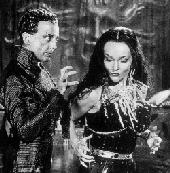 Double Bill FRIDAY & SATURDAY DECEMBER 22 & 23
Double Bill FRIDAY & SATURDAY DECEMBER 22 & 23
* 7:15 pm
THE TALES OF HOFFMANN
Great Britain 1951. Director: Michael Powell, Emeric Pressburger
Cast: Moira Shearer, Robert Helpmann, Robert Rounseville, Leonid
Massine
A deliriously stylish, fantastical fusion of opera, ballet, and
cinema, Powell and Pressburger's impossibly sumptuous Tales of
Hoffmann is based on the Offenbach operetta, and has been cited
by Martin Scorsese as a major influence on both New York, New
York and Raging Bull. Three Gothic tales of unrequited love
by
Romantic poet E.T.A. Hoffmann, plus prologue and epilogue, unfold
in a lavish, no-holds-barred extravaganza of excess,
expressionism, choreography, costume, music, glorious
Technicolor, and to-die-for art direction. The result is a
"world of enchantment where marionettes become dancers, a pimp is
a magician with the power to turn wax candles into jewels, and a
prostitute has the power to erase a man's reflection. . . The
screen is turned into a magical, irrational visual feast that
moves according to its own laws" (Amy Greenfield, Film Comment).
This newly-restored version adds the final segment excised from
British release prints, and returns the film to the original,
full-length form which won a Special Jury Prize (for superior
technique) at Cannes in 1951. "Not only one of the greatest of
all opera films, but also a summing-up of the themes that run
through much of [Powell and Pressburger's] work, here done in a
rich kaleidoscope of styles. Some of their grimmest black humour
coexists with poignant images of romantic yearning" (Ian
Christie). "Eccentric, astonishing. . . [it] stands as Powell's
most magnificent attempt to fuse the arts into film form. Perhaps
its only rival in this context is Disney's Fantasia" (Joseph
Gomez). Colour, 35mm. 127 mins.
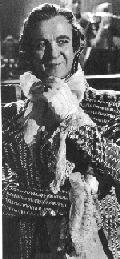 * 9:40
pm
* 9:40
pm
THE ELUSIVE PIMPERNEL
Great Britain 1950. Director: Michael Powell, Emeric Pressburger
Cast: David Niven, Margaret Leighton, Jack Hawkins, Cyril Cusack
Powell and Pressburger's romping version of Baroness Orczy's oft-
adapted adventure novel is an elaborate, lively, lavish costume
spectacle that was originally designed as a musical. David Niven
stars in the lead as the dashing British dandy who secretly
doubles as the Scarlet Pimpernel, daring rescuer of French
aristocrats condemned to the guillotine during the dark days of
the Reign of Terror. While The Elusive Pimpernel may be no one's
favourite Powell and Pressburger film, it is nonetheless a
dazzling, dynamic work, full of stunning set pieces and richly-
detailed period design, which "shows Powell at the height of his
powers as a visual stylist, synthesizing many traditions of
cinema as an electric spectacle" (Ian Christie).
"Characteristically vivid and colourful, and sparked by bright
flashes of sardonic humour" (Tom Milne). "A gem among British
swashbucklers. . . [with] a style and energy which can only lead
to regret that The Archers made so few excursions into the
hinterland of British costume drama" (Christie). Colour, 35mm.
109 mins.



 In the history of motion pictures, Michael Powell and Emeric
Pressburger occupy a very special place. They explored uncharted
territories, established new boundaries and redefined the art of
film-making. . . [F]or me, the Powell/Pressburger films perform
like symphonies. I can frequently play them and yet discover new
things, enjoy their rich texture, their subtle nuances, their
hysteria and grace. As a viewer, they make me feel I'm
continuously rediscovering the cinema." -- Martin Scorsese
In the history of motion pictures, Michael Powell and Emeric
Pressburger occupy a very special place. They explored uncharted
territories, established new boundaries and redefined the art of
film-making. . . [F]or me, the Powell/Pressburger films perform
like symphonies. I can frequently play them and yet discover new
things, enjoy their rich texture, their subtle nuances, their
hysteria and grace. As a viewer, they make me feel I'm
continuously rediscovering the cinema." -- Martin Scorsese



 SUNDAY & MONDAY DECEMBER 3 & 4
SUNDAY & MONDAY DECEMBER 3 & 4  Double
Bill FRIDAY & SATURDAY DECEMBER 8 & 9
Double
Bill FRIDAY & SATURDAY DECEMBER 8 & 9

 * 9:15 pm
* 9:15 pm






